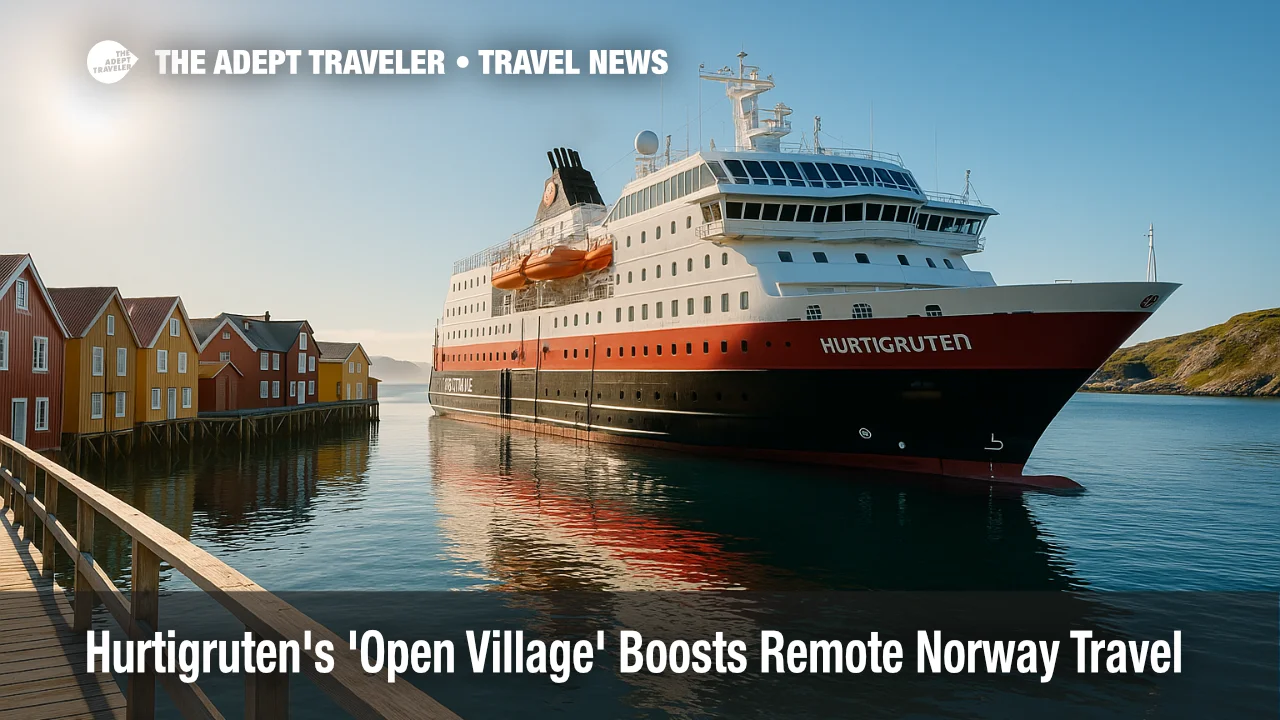Hurtigruten's 'Open Village' Boosts Remote Norway Travel

Cruise operator Hurtigruten is rolling out its new "Open Village" concept this summer, opening the doors of three tiny Norwegian coastal communities-Bessaker, Træna, and Sæbø-to its Signature Line guests. The scheme channels a direct payment of NOK 250 (about $24 USD) per passenger to each village and limits arrivals to ships carrying no more than 500 travelers. By pairing modest visitor numbers with community-led activities such as woodcarving workshops, chapel concerts, and self-guided heritage walks, Hurtigruten aims to curb overtourism in Norway while injecting reliable income into villages where full-time populations total fewer than 1 000.
Key Points
- Why it matters: directs cash to local businesses while easing pressure on hotspots like Lofoten Islands.
- Three participating villages-Bessaker, Træna, Sæbø-collect up to about $12 000 per call.
- Available only on Signature Line voyages sailing May - September.
- Hands-on activities include live music, woodcarving, and village parades instead of standard shore tours.
- Part of Norway's broader push for visitor taxes and slow-travel incentives.
Snapshot
Each "Open Village" call lasts several hours and splits passengers into small groups guided by residents. In Bessaker, guests sample sodd soup and tour Osen Bygdetun farm; in Træna they follow a booklet-led trail linking Petter Dass Chapel, the village church, and fishing-museum exhibits. Sæbø adds avalanche-center briefings and live church concerts. Hurtigruten's payment model guarantees revenue regardless of on-shore spending, funneling money to 12 local enterprises ranging from bakeries to kayak outfitters. Villagers say the predictable cash flow encourages year-round services that would otherwise shutter after summer.
Background
Norway welcomed a record 7.3 million international visitors in 2024, crowding marquee stops such as Tromsø and the Lofoten archipelago. Authorities responded by introducing a new tourist tax and encouraging operators to disperse traffic. Hurtigruten, which has connected coastal communities since 1893, adapted by upgrading its summer Signature Line voyages with the community-profit plan. The company worked alongside village councils to craft activity menus, set capacity caps, and establish a payment formula tied to actual headcount. Odd Tore Skildheim, Hurtigruten's head of product development, says the program puts "genuine connection" ahead of box-checking excursions.
Latest Developments
Community-Led Shore Visits Replace Mass Tours
The villages design and host every activity, from Træna's heritage walk to Bessaker's wood-carving demo. Hurtigruten staff stay in support roles, letting residents control the narrative. Locals cite a morale lift as well as income, noting that ships create steady demand for bakeries, artists, and restaurants-services that help the settlements retain young families and seasonal workers.
Payment Model Ties Profit to Passenger Count
At NOK 250 per traveler, a full 500-passenger call translates to NOK 125 000 (about $11 900 USD) for each community. Funds are distributed through a village-managed trust that covers business grants, festival budgets, and infrastructure upkeep. By linking revenue to actual arrivals, the model avoids the volatility small ports face when larger ships cancel at short notice.
Analysis
Hurtigruten's "Open Village" scheme offers a template for cruise lines seeking social-license credibility without sacrificing commercial viability. By capping ship size and paying an entry fee that approaches an industry-standard shore-excursion cost, the operator transfers spending power directly to residents rather than third-party tour brokers. The community trust structure also shields locals from the boom-and-bust cycle typical of seasonal destinations. From a destination-management perspective, steering visitors toward under-touristed hamlets alleviates pressure on Norway's photo-famous icons while broadening travel's economic footprint. The challenge will be scaling the concept without undermining its intimacy: if the model expands to additional villages or competitors adopt copy-cat programs, capacity limits and resident input will be critical to avoid re-creating overcrowding in new places.
Final Thoughts
"Open Village" positions Hurtigruten as a slow-travel pioneer at a time when travelers and governments alike are scrutinizing cruise impacts. If the pilot succeeds, it could redefine what responsible shore time looks like in fragile coastal regions-keeping local culture intact while ensuring visitors leave more than footprints. For now, the initiative offers one of the most transparent ways to practice mindful cruising in remote Norway. Hurtigruten Open Village stands to become a benchmark for community-first itineraries.
